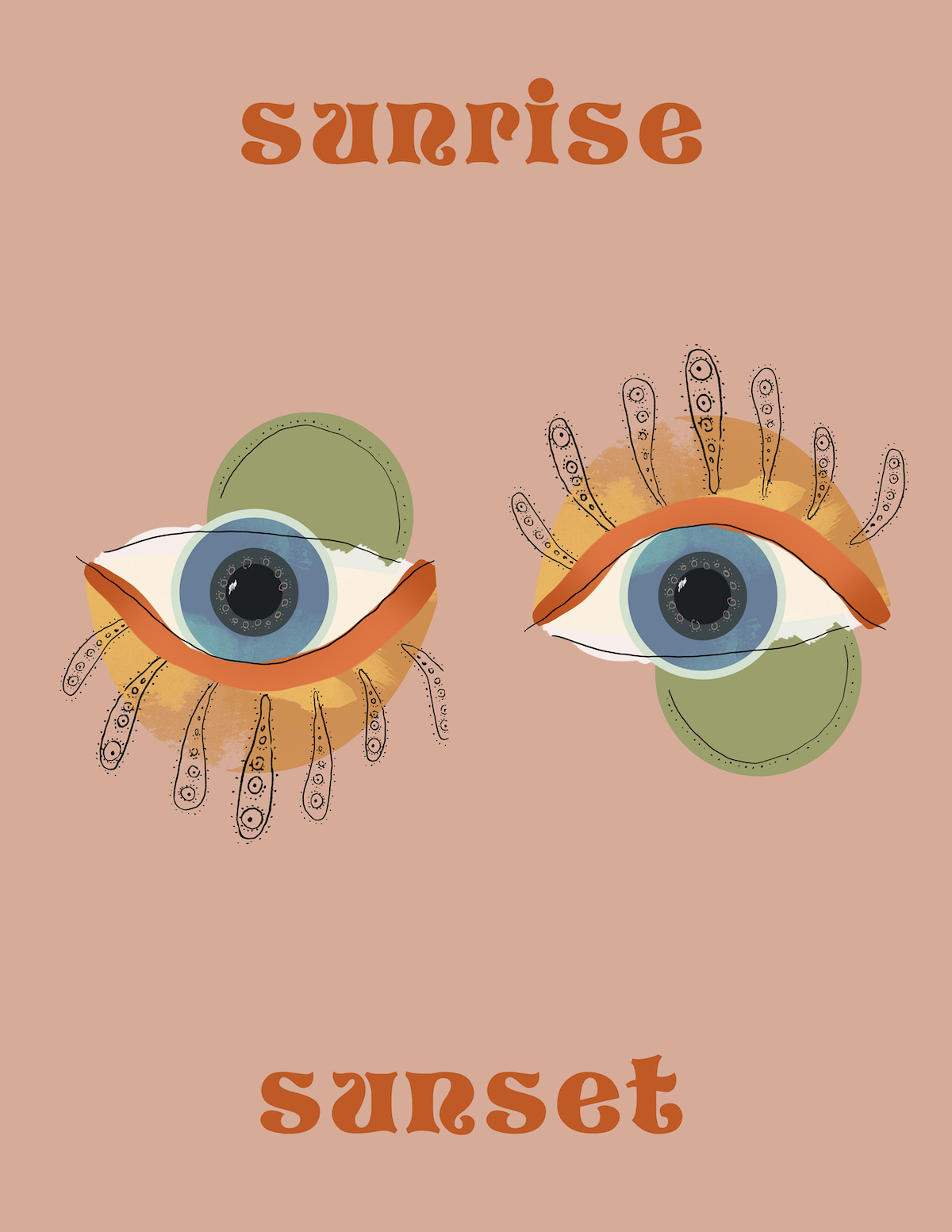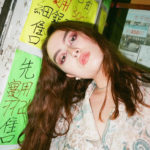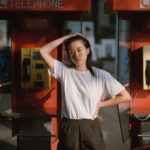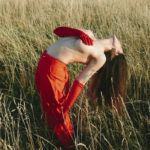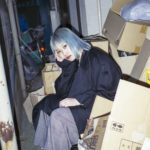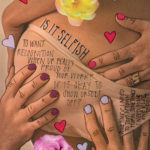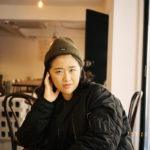Hunter: I'm Hunter and I'm a model based in Hong Kong. I also make films, write,…
Katia Engell
A Toronto-based collage artist on her multifaceted practice22 August 2019
YEOJA Mag had the pleasure of talking to Katia Engell, a Toronto-based multidisciplinary artist and student, whose practice also involves working with one-on-one with persons with dementia. Engell is interested in the reappropriation of images that interest her, and rewriting their contexts
While a lot of her collage and drawing is a form of personal meditation, Katia Engell’s passion lies in using art to connect with others. Inspired by creative work with persons with memory loss, she explores the different ways people experience “reality”, and how art can bridge the gap between the personal and the collective. She finds that collage is a great way to play with reality, through the fragmentation and reassembly of images. She is an Ontario College of Art and Design graduate with a Bachelor of Design in Illustration, and is currently completing a Master’s in Recreation and Leisure, focusing on arts-based and relational approaches to working with persons with dementia. Her current art practice consists primarily of collage, facilitating interactive collage installations for events, trying not to paint every blank surface in her home, and building relationships with others.
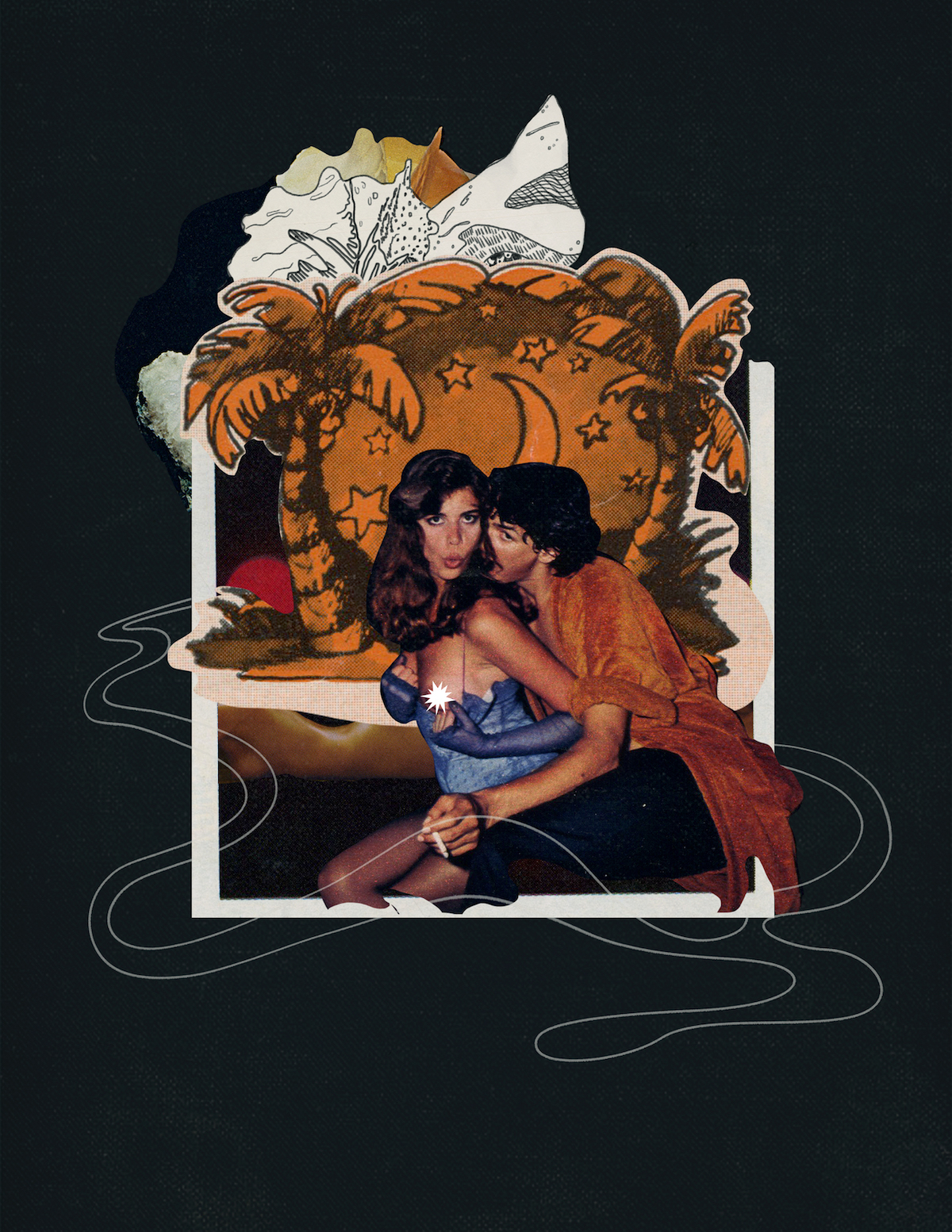
How is your city, Toronto, important to you creatively?
Katia Engell: Toronto is where I grew up and yet, for a variety of reasons, I never explored it as a younger person. It feels like a big melting pot of contradictions: people experiencing homelessness sleep outside fancy hair salons. It’s an urban concrete jungle spotted with patches of dense green. It feels so vast, yet I’m always running into people I know. Some of these contradictions are hard to reconcile, but there is something interesting about knowing that there is so much duality in this city. I like exploring the fact that reality is a variety of things to a variety of people, and I think living in a big, relatively open-minded city, has been a real privilege and has shaped my view of the world, and thus my creative work.
Did you always intend for your practice to lie at the intersection between art and activism?
Katia Engell: Not at all! I sort of wanted to be a top-dog illustrator because that’s what we were told to reach for in my undergraduate program, and there’s nothing wrong with that vision either. But, it requires you to have a level of ego and belief that you and your work are indeed, “the best’. People who act that way and are constantly selling themselves as such always leave a sour taste in my mouth. After graduating, I realized how much I hated the competitiveness of my program. I don’t have a strong competitive nature, I’ve never been one to social climb by stepping on others’ toes, I’ve always craved collaboration. I always thought it was a missed opportunity to be in a huge multi-disciplinary art school and to never be encouraged to collaborate outside of my department. Not needing to compete didn’t occur to me until I stumbled into my work with persons with dementia. There are pockets of the creative world that are actually all about collaboration and collective action.
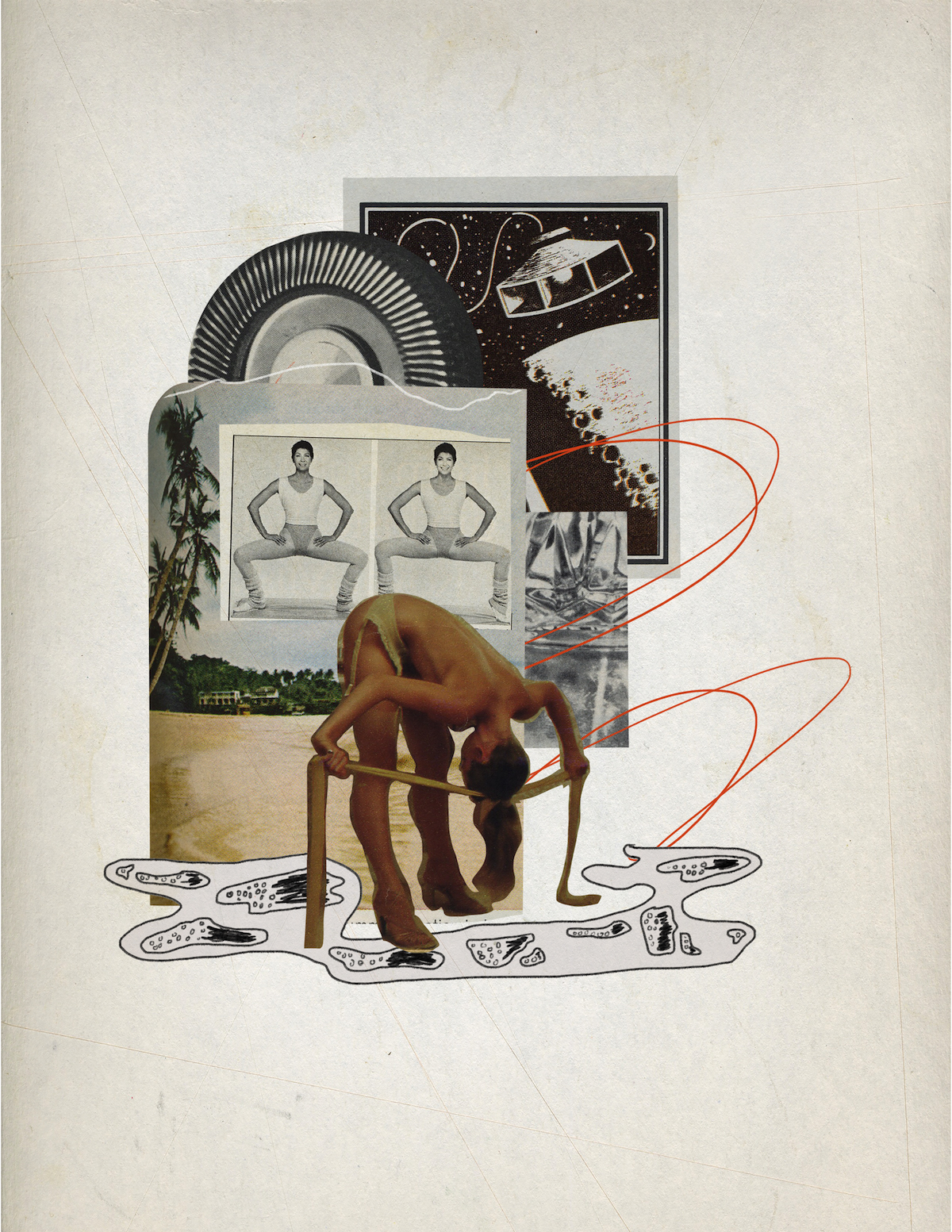
Who and what informs your work? Specific people, moments, movements, ideas?
Katia Engell: Relationality, the condition of being relational is number one to me. In my Master’s I started deep diving into relational theories and theorists, and realized how much it all resonated with me and my personal desire for collaboration and connection. One theory in particular, Relational Cultural Theory (RCT), spearheaded by Judith Jordan and her colleagues, is particularly poignant for me. RCT looks at the ways western cultures have evolved to valorise competitiveness and the “self made man”, and the chronic disconnection and oppression this creates for all human beings. If you think about it, if your goal is to be “the best”, someone else has to be “worse” or even “the worst”. Why do we need to be the best? We can’t all be.
RCT also looks at the ways women are raised to be more relational, but then shamed for it. This is a huge oversimplification of the theory as it is complex and beautiful and in my opinion is the way forward for society. I highly recommend looking it up. RCT also connects to the work of Nicolas Bourriaud, and his Relational Aesthetics, wherein art is used to create spaces for dialogue and critical thinking, which I am really fond of. I’m also really inspired by Paulo Freire’s Pedagogy of the Oppressed, and am inspired to find ways to use art for the greater purpose of inspiring critical thinking and in turn, liberation.

Would you describe your pieces as being inherently feminist? Would you describe the concept of “femininity” as playing a key role in your work?
Katia Engell: I think my work is feminist, yes, though it’s not always explicit. I love exploring femininity and feminine forms for sure, but I tend to mess with reality and explore ambiguity through my collage work. In certain pieces, I definitely fragment and re-organize gender concepts all-together. Interestingly, a lot of my material comes from old Playboy magazines. There’s actually something way more beautiful and elegant about the way Playboy used to photograph their models, depending on which decade you’re looking at. I’m not scared of nudity or sexuality, so I kinda dig it. There’s still definitely a level of objectification, especially in the magazine’s articles and advertisements , but the photos are sometimes really gentle. I also like the idea of further “empowering” the model by incorporating her in an artwork where she is a vibrant, beautiful central figure. This isn’t necessarily my thought process as I work, but it’s definitely an underlying theme. I also love trying to sneak some boobs into my art on Instagram and see if I can get away with it.
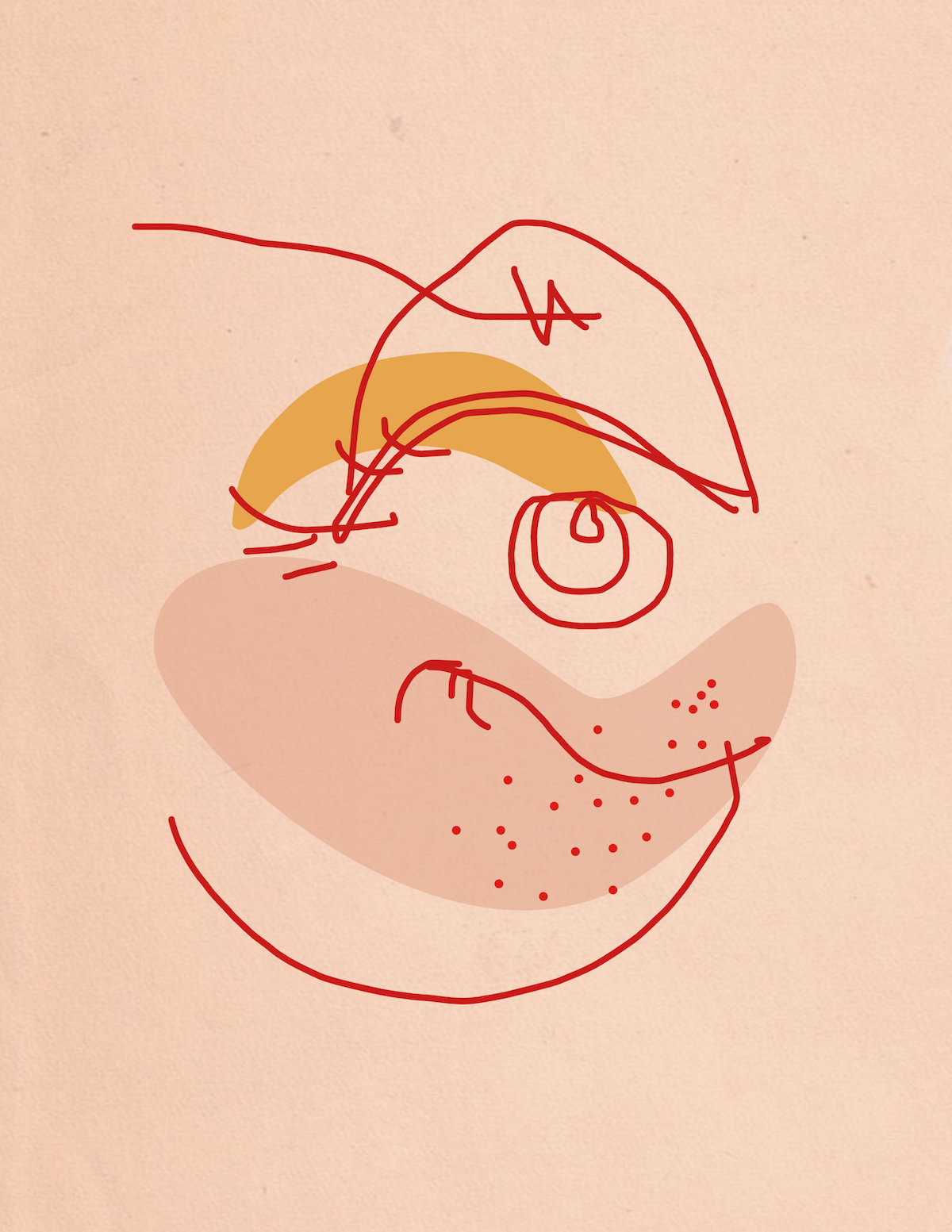
How do you connect the notions of reality and fragmentation of the truth in your work, with the ever worsening global political and environmental situations?
Katia Engell: I think looking at reality or truth as one solid “entity”, so to speak, is one of the most damaging parts of how our societies function. Singular truths create hierarchies and division, create someone who is “right” and someone who is “wrong”. I believe our realities are individual, and for the most part, our realities overlap into a shared reality. There are outliers however, whose realities only overlap a little, or not at all, or are more fluid than others. I see this most clearly in my work with persons with dementia, for whom reality is sometimes a little harder to define, but it extends to everyone. My perspective on a situation may be vastly different than someone else’s, but to both of us it is entirely real. Nobody wants their reality to be questioned because that’s scary. We cling to our realities to keep us grounded, so you react, get angry, get righteous, and things end up in conflict. I think we see this conflict on a large scale when leaders impose their realities on those they’re leading.
Historically speaking, the layered appearance of a collage adds to its appeal—why do you choose to create your artworks digitally?
Katia Engell: When I’m working on a project for a client, I work digitally. That way I have the flexibility to make changes for them based on their feedback. If I cut up my magazines and glue everything down, there’s no going back. So I find that this flexibility leads to happier clients and means I don’t end up wasting time and materials. I still try to incorporate scans from my collection of magazines in every piece. When I’m working for myself, just for the sake of being creative and making art, I’m more likely to go analogue, unless I’m on vacation or otherwise unable to access my drawers of magazines!
Do you share your work solely on Instagram, or have you also exhibited prints?
Katia Engell: I’ve exhibited prints and original pieces. However, I’ve slowed down on that front because of competing priorities with school and work these past few years. So right now it’s mostly Instagram, though I do also have a mural or two up around the city, so a public exhibit of sorts.
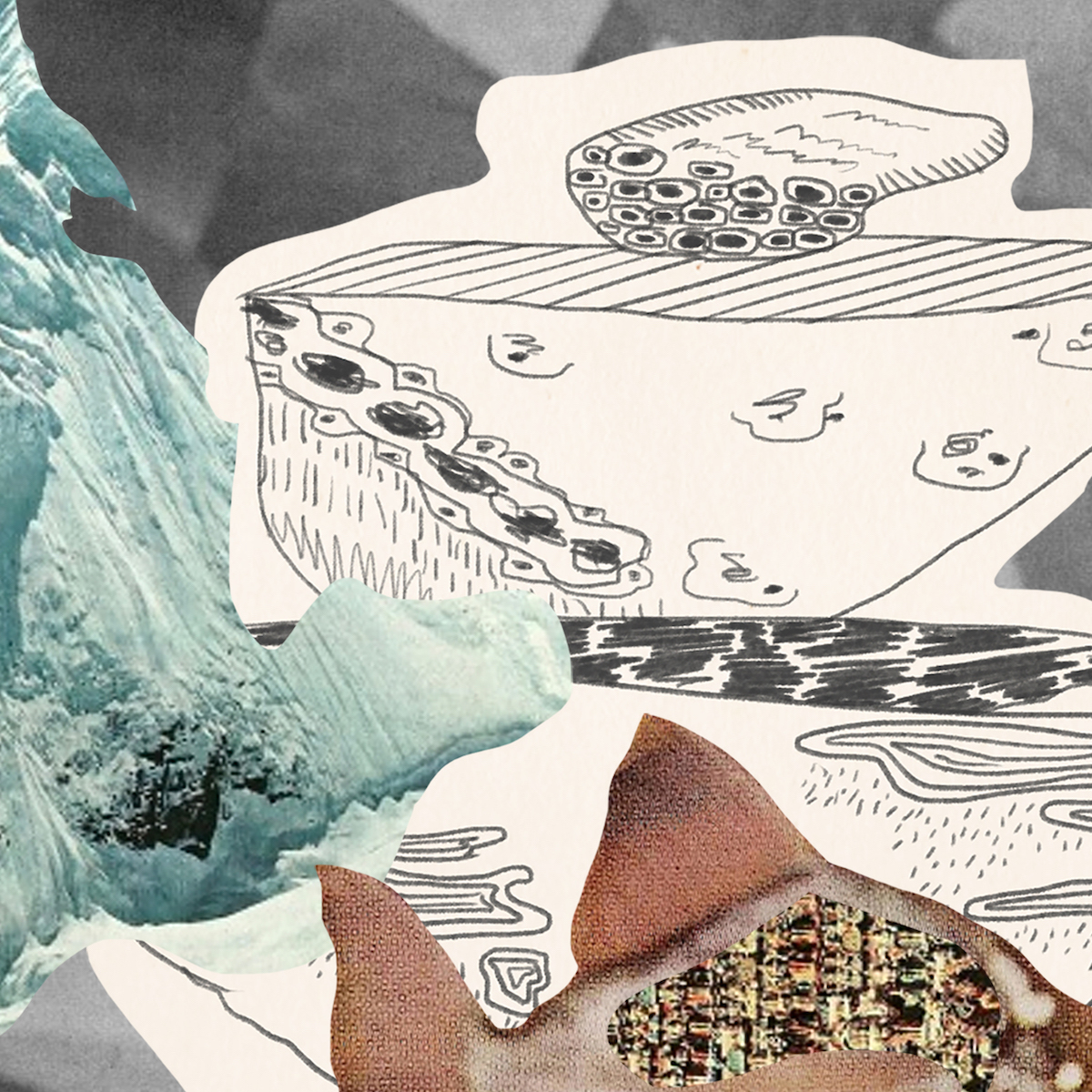
As more methods for creating art using digital materials appear, why did you choose to continue using the collage technique?
Katia Engell: It’s like solving a puzzle I get to make up the rules for as I go along. It satisfies my curiosity for certain images, figuring out how I can include them in a piece, and also thinking about how I can combine elements to create something jarring or beautiful or weird or satisfying.
I’ve started incorporating my own abstract drawings into my collages, which has been a cool evolution. I get a real satisfaction from solving my own made-up puzzles, and I actually like the way they look. For a long time I made art that people thought was cool but I wouldn’t want to hang up in my own house. Now, my collages feel so in tune with me, my aesthetic, and my inner life, that I’d hang them up. Now that I say that, I haven’t hung any up, but I would!
Can you tell us a little bit more about your creative process? Where and how do you begin once you become inspired?
Katia Engell: Sometimes when I’m in the mood to create, I end up flipping through magazines or scans to no avail. Usually I’m looking for my central figure first, usually a person. I’m trying to find a pose or a colour scheme—something that feels groovy or exciting to me that day. I like when there’s a repeated image of a model that I can use, so that I have two versions of someone, or maybe versions that are just a little different so I don’t have to digitally copy and paste them.
I like highly unusual things, like a gold statuette of a naked women jumping with her arms and fingers all spread out. If the face is prominent enough, I like to find eyes and mouths and noses and other faces to add to the face. I don’t always like using an image as it is, I try to make it my own out of respect for the photographers’ hard work, which is an ethical matterI think about all the time as a collage artist.
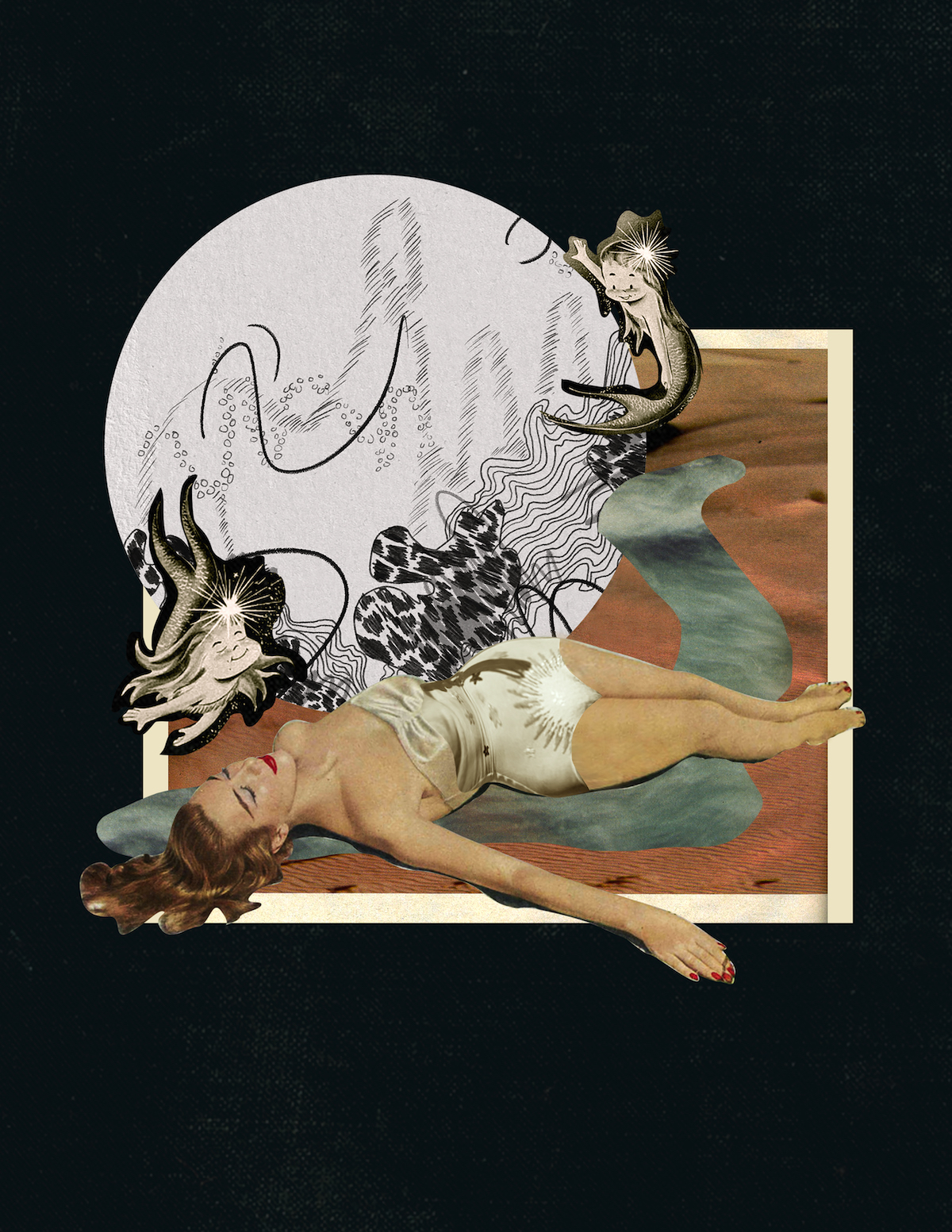
I also like taking things and abstracting them—a large, single petal becomes a textured shape when separated from the bigger picture, the neck of a bottle from a whisky advertisement becomes a cool coloured square when cropped as such. Then I just intuitively try to find backgrounds and additional pieces. Maybe a bee will inspire me and it becomes a headdress. I work to create an overall shape for the piece, as it’s rare that my pieces have full-bleed backgrounds.
So I may throw in some of my own drawing, even if it’s just a few squiggly lines. Lately I’ve been spending a lot of time experimenting with background colours, usually at the very end if I’m working digitally. It can really make a piece pop all of a sudden, or totally dull it. I try to leave this part to the end when working analogue too.
Could you please tell us a little about your work with persons with dementia? How would you describe this practice?
Katia Engell: My work with persons with dementia is something I’m deeply passionate about. I stumbled into this role as an art student, working with an individual privately in her home once a week, we usually painted bouquets of flowers together.
Eventually she began attending a program near my parents’ house and I followed along, volunteered, and ended up working there. I’m still there after five years! It’s an incredible place that advocates for cultureal change within dementia care by moving towards relational caring. It all comes full circle. The idea is not about therapy, which focuses on what’s wrong with someone and how we can “fix” them, and so on. People with dementia get enough of that shit.
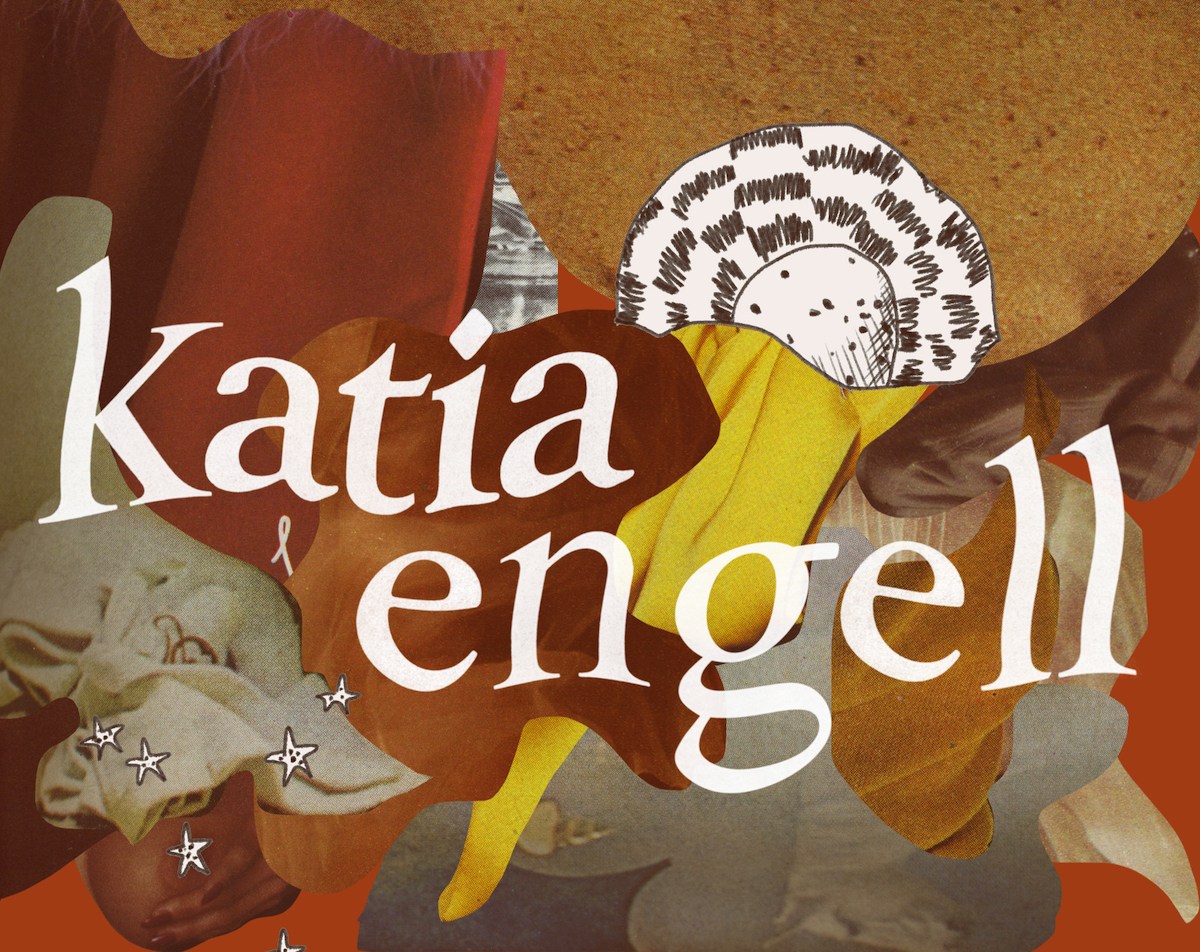
Instead, it’s about building relationships, engaging in relationships, acknowledging relationships, and most importantly in my opinion, acknowledging the person’s capacity for relating. We assume so much about dementia, what the dementia journey is, what someone with dementia is capable of. I’ve seen how, in a safe space, persons with dementia can flourish, learn, make meaningful connections, and continue experiencing all the things life has to offer each of us.
As I said, the art I make with persons with dementia is not therapy. It is creative exploration. It is a challenging, fulfilling way to connect with people and fill that need for human relating. A need that is so often denied to people who are typically only treated as needing medical or physical care assistance.
Even if somebody doesn’t make art with me, but watches and speaks with me as I make something, watches the colours blend, tells me what colours to use, it’s all groovy. Art becomes a vehicle for meaningful relationships. It also means as an artist, I get to explore and try out different mediums, never limiting myself. I also learn from my participants. We laugh, dance, explore with music and improvise. I get to thrive alongside them.
–
Artwork: Katia Engell
Be sure to follow Katia on Instagram. For more artist intHERviews, click here.



